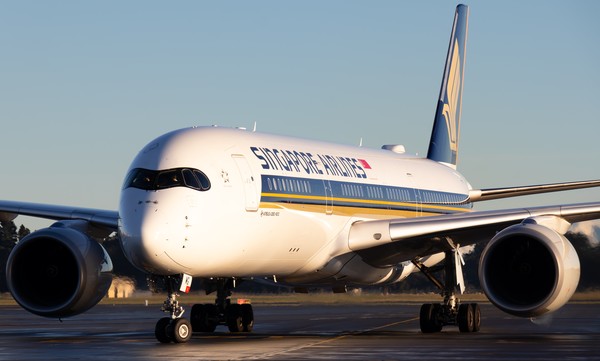On sustainable aviation fuels

EVER SINCE passenger travel first commenced over a century ago, trends in commercial aviation have evolved at a consistent pace. The 1970s were all about supersonic speed and large carrying capacity, while the 1990s saw long-range, twin-engine aircraft burgeoning in popularity. Fast forward to 2023, and efficiency is the new meta; large, gas-guzzling planes are being retired in favor of smaller, more efficient ones, in an attempt to both cut operating costs and adhere to ever more stringent environmental regulations. With aerodynamics and engine technology already optimized for minimal fuel burn, the aviation industry is turning to sustainable aviation fuels to continue the change toward eco-friendly air travel.
Basics of sustainable aviation fuel
Sustainable Aviation Fuels (SAF) possess similar chemical compositions to regular fossil fuels but differ in three major aspects. First, they must meet various criteria for sustainability, including lower lifecycle carbon emissions and minimal need for scarce resources during production. Second, they are produced from alternative raw materials instead of fossil fuels, such as oil and various forms of waste. These can include everything from animal waste to leftover food, cardboard, and wood. Third, SAF must meet the necessary certification requirements to power jet aircraft[1]. SAF can thus be blended with and handled like conventional jet fuel, requiring no infrastructure changes to power existing aircraft. Currently, the vast majority of SAF-powered flights are operated using a mix of regular and sustainable fuels.
Presently, three types of SAF exist. Fats, Oils, and Greases (FOG) refers to the first generation of SAF and is already in use today. FOG is produced from fats and oils, leading to a 50% to 80% reduction in carbon emissions. The second generation of SAF is referred to as biomass. Biomass fuels are made from carbon-based living organisms, such as algae, animal waste, and forestry residue. Because they reuse waste that would otherwise discharge greenhouse gasses in storage, biomass fuels slash carbon emissions by 85% to 95%. Power-to-liquid, otherwise known as synthetic fuel, is the third generation of SAF. Such fuels are essentially artificial liquid hydrocarbons, produced using renewable energy, water, and carbon dioxide. More specifically, eco-friendly hydrogen is produced through electrolysis[2], which is powered through renewable energy. Carbon dioxide is captured directly from the atmosphere, a process that contributes significantly to power-to-liquid’s reduction in carbon emissions by up to 99%. The hydrogen and carbon dioxide are then mixed together to create power-to-liquid fuels. A notable example of power-to-liquid fuel is Zero Petroleum’s UL91, which was used to supply the world’s first flight powered entirely by synthetic aviation fuel[2].
Benefits and drawbacks
SAF possesses a multitude of benefits over fossil fuels, the most notable of which is reduced lifecycle carbon emissions of at least 50%. Lower lifecycle emissions mean that SAF is not only more efficient during operation, but also produces less greenhouse gasses during production and refinement[3]. Moreover, SAF is an excellent way for the aviation industry to diversify supply. While pure reliance on fossil fuels may lead to industry-wide collapse, splitting reliance between conventional and sustainable fuel types significantly mitigates that risk. There are also various economic incentives for utilizing SAF. For airlines, the globally spread-out nature of SAF production makes them less susceptible to sudden oil price fluctuations. Meanwhile, communities are provided with an avenue to reduce waste, by diverting them to SAF production efforts.
However, SAF is not without its drawbacks. For FOGs, limitations in the supply of fats and oils render scaling up production difficult. Biomass fuels have lower energy density relative to fossil fuels, requiring more volume. This consequently decreases carrying capacity, increases costs, and hampers efficiency. Power-to-liquid fuels require a greater amount of renewable energy to produce, necessitating significant investments in relevant infrastructure.
Applications and outlook
Currently, SAF accounts for 0.1% of the world’s total jet fuel output[1]. Over 450,000 flights have been operated with SAF, and some 50 airlines have embraced it in some capacity[4]. One such carrier is United Airlines, which has committed to purchasing 1.5 billion gallons of biomass SAF from Alder Fuels. In Europe, KLM Royal Dutch Airlines operated the inaugural commercial flight powered by Shell synthetic kerosene back in 2021. Shell has also partnered with Korean Air to provide SAF at major Asian and Middle Eastern airports starting from 2026[5]. Other major Asian airlines like Singapore Airlines and Cathay Pacific have either begun operating flights with SAF or are partnering with corporate customers to expand the use of SAF for business travel[6].
Although the usage of SAF is not widespread yet, output has been increasing significantly in recent years, from 0.02 Mt in 2019 to 0.24 Mt in 2022. This upward trajectory is projected to persist, thanks to a slew of new refineries being erected across North America, Europe, and Asia. Airlines are also gradually strengthening their commitment to SAF, exemplified by the likes of British Airways, Delta, and Virgin Atlantic pledging to expand SAF usage to 10% by 2030. Furthermore, members of the Oneworld[7] Alliance have announced an initiative to utilize SAF for flights to California starting from 2027.
[1] International Air Transport Association
[2] Electrolysis: The process of decomposing a substance by passing an electric current through it
[2] The Engineer
[3] Aviation Benefits
[4] i6 Group
[5] Korean Air
[6] Cathay Pacific
[7] Oneworld: An alliance consisting of Alaska Airlines, American Airlines, British Airways, Cathay Pacific, Finnair, Iberia, Japan Airlines, Malaysia Airlines, Qantas, Qatar Airways, Royal Air Maroc, Royal Jordanian, and SriLankan Airlines

